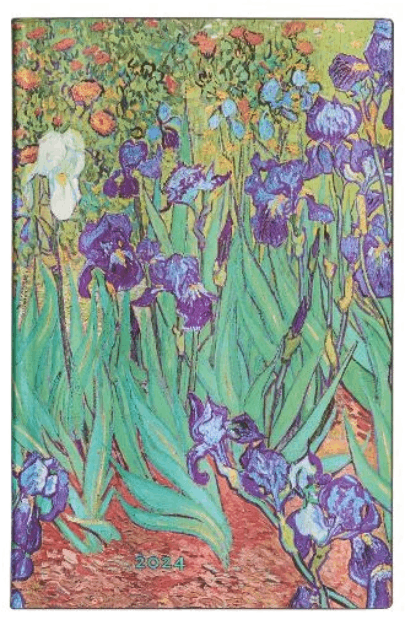
Vincent van Gogh was one of the great Post-Impressionist painters.
MORE FEATURES: Decorative printed cover paper FSC-certified text paper Threaded stitching and glue, as needed Cloth headbands Acid-free sustainable forest paper Flexible cover and spine Monthly planner Conversion tables Year planner International dialling codes Mini calendars International holidays World time zones Note-taking pages Address book pages Name plate.
Paul Getty Museum in our collection.
We are honoured to feature this seminal painting from the J.
One can emotionally feel the painting’s strong colours, thickly applied paint and powerful decorative rhythms, all of which convey the artist’s sense of nature’s surging vitality.
The close study of nature was the foundation of Van Gogh’s art, as his precise delineation of individual flowers suggests, but he also brought to that study an astonishing degree of subjective intensity.
His recuperation began with painting of the asylum garden, Irises chief among the resulting output.
A severe mental health crisis, in which he now-famously cut off his own ear, prompted Van Gogh to admit himself to the Saint-Paul Asylum at Saint-Remy in the south of France.
Though much of his work, like this Irises study, is filled with brightness and light, Van Gogh’s own life was filled with personal turmoil.
The near spiritual excitement of his swirling brushwork, contoured forms and intense colour has had a powerful influence on the development of modern painting.
Dutch artist Vincent van Gogh (1853–1890) was one of the greatest of the Post-Impressionist painters.
We are honoured to partner with Getty to bring Van Gogh’s stirring Irises study to our collection.
After admitting himself to the Saint-Paul Asylum following a severe mental health crisis, he recuperated by painting the asylum’s garden.
Vincent van Gogh was one of the great Post-Impressionist painters
